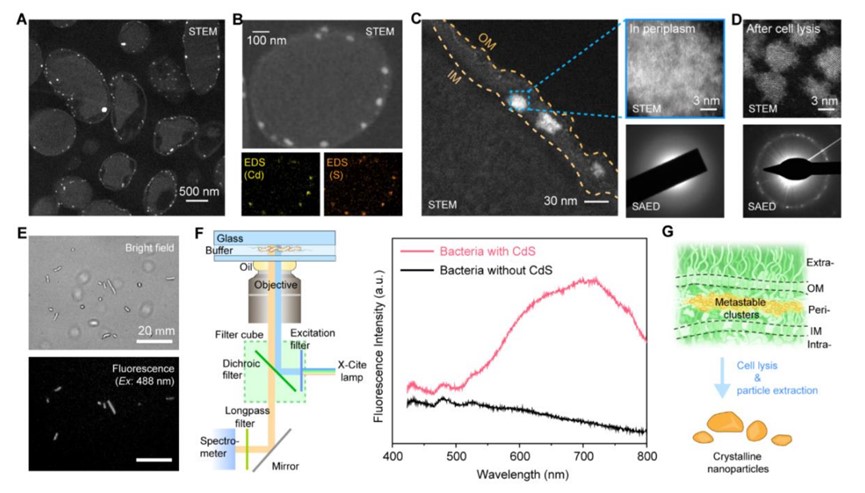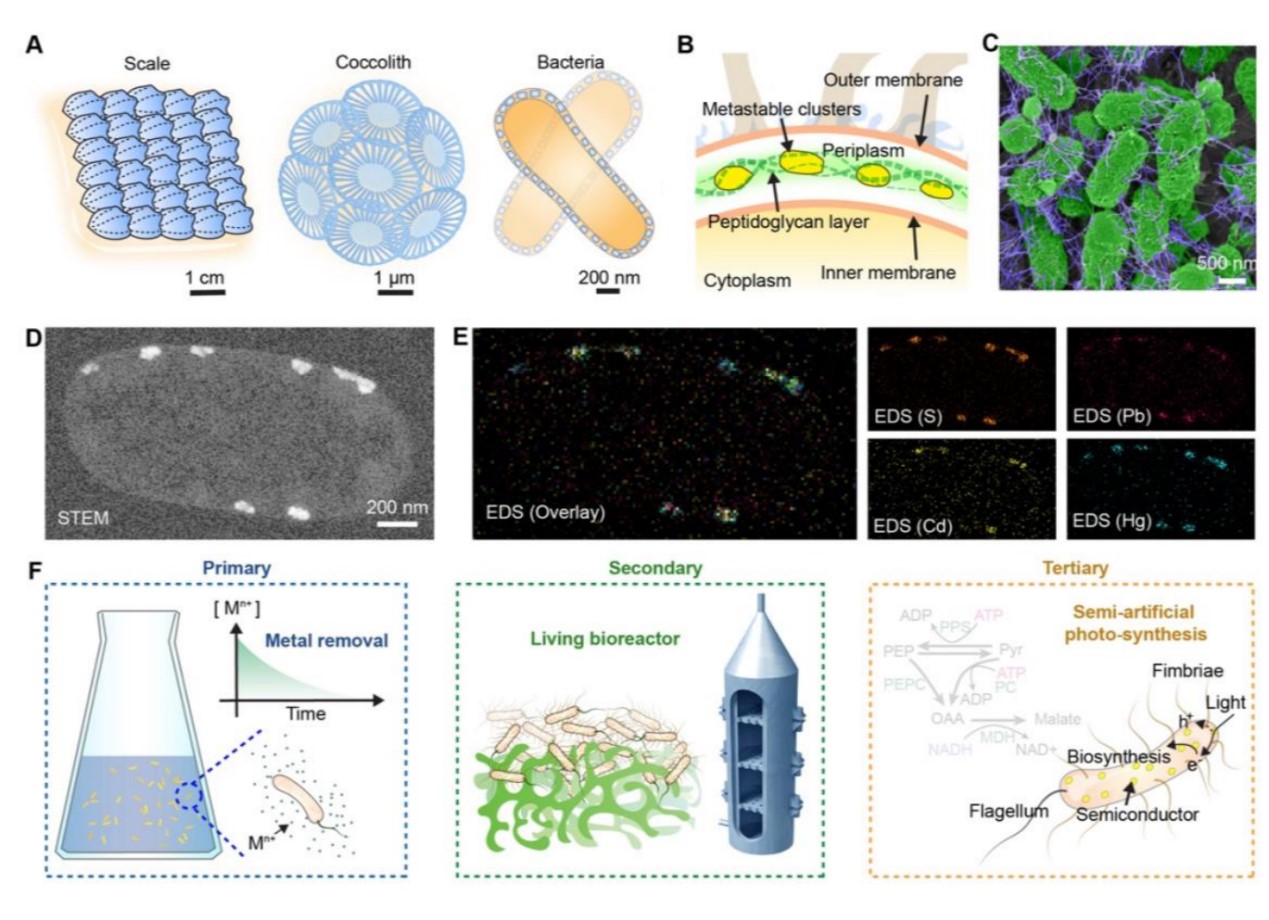Exploring the Potential of Periplasmic Biohybrids: A Path to Sustainable Applications
Date:27-06-2023 | 【Print】 【close】
Researchers from the Shenzhen Institute of Advanced Technology (SIAT) of the Chinese Academy of Sciences (CAS) and the University of Chicago have discovered semiconductor nanocluster precipitation within the periplasmic space of Gram-negative bacteria for efficient solar-driven chemical production.
The findings were published in Science Advances on July 21.
Biomineralization, a process involving the deposition of inorganic substances around biological cells and tissues, leads to the formation of composite materials. Bacteria have the ability to extract metal ions from their surroundings and produce functional materials. The periplasmic space, a gel-like matrix situated between the inner cytoplasmic membrane and the outer membrane of bacteria, offers unique opportunities for synthesizing and utilizing nanomaterials within a confined environment.
The periplasmic space of Gram-negative bacteria, characterized by abundant enzymes and peptidoglycan, provides a fertile ground for biomineralization and the construction of non-genetic hybrid interfaces. Additionally, Gram-negative bacteria have an electron transport chain closely connected to the periplasm which facilitate the light-induced electron from semiconductor transfer to the electron transport chain for intracellular reducing power regeneration.
The researchers demonstrated that in situ produced defect-rich semiconductor nanoclusters can elevate adenosine triphosphate (ATP) levels and enhance malate production under light condition.
Moreover, the team expand the sustainability of the biological hybrid system to include reducing heavy metal content, creating a living bioreactor, and constructing a semi-artificial photosynthesis system. By harnessing the power of biomineralization, the periplasmic biohybrids showcase immense potential as a platform for various sustainable applications.
"We believe that the construction of periplasmic biohybrids can serve as an invaluable semi-artificial photosynthesis-based model for solar-driven bio-catalysis and sustainability," stated Prof. GAO Xiang.
Semiconductor biosynthesis is highly adaptable, allowing for controlled biocompatibility and efficient pairing with bacterial components, serving as a source of electrons for metabolic processes. Although the synthesis of metallic nanoparticles within the periplasm has been reported, the exploration of semiconductor-based biological interfaces in this space has remained largely unexplored, particularly in terms of bioregulation and multilevel sustainability.
The research team developed a non-genetic approach for semiconductor biomineralization in the periplasm of E. coli and from microbial biohybrids. The semiconducting nanoclusters exhibited reduced crystallinity and were stabilized by the periplasmic peptidoglycan matrix, providing a softer interface with the bacterial cell. The team employed various imaging techniques, including STEM, 3D X-ray fluorescence Chromatography, fluorescence microscopy, XRD, ICP-MS, transcriptome analysis, and knockout mutants, to investigate the underlying mechanisms of materials and biological characterization. They discovered the semiconductor nanoclusters (eg. CdS) were mediated by H2S-producing pathway.
The production of periplasmic biomineralization extends beyond the removal of heavy metals in flask cultures. They can also be produced in continuous bioreactors, allowing for semi-artificial photosynthesis under light conditions. The results highlight the underexplored nature of the periplasmic space in bacteria, providing a promising space for constructing semiconductor-based biohybrids with a wide range of applications, including environmental remediation, living bioreactor fabrication, and semi-artificial photosynthesis for bioproduction and sustainability.
The periplasmic biohybrid platform developed by the research team for solar-driven chemical production can potentially be extended to other bacteria or cells, enriching bioremediation applications with additional sustainability.

Fig.1 Periplasmic biomineralization would provide biointerfaces for modulation and 40 sustainability. (Image by SIAT)

Fig.2 Biomineralization occurs in the periplasm and the nanoclusters are metastable. (Image by SIAT)
Media Contact:
ZHANG Xiaomin
Email:xm.zhang@siat.ac.cn